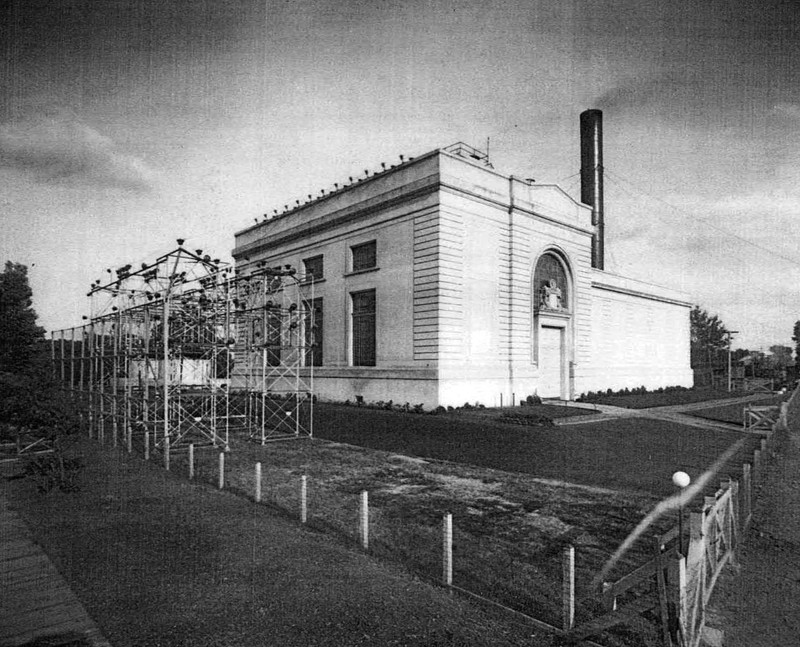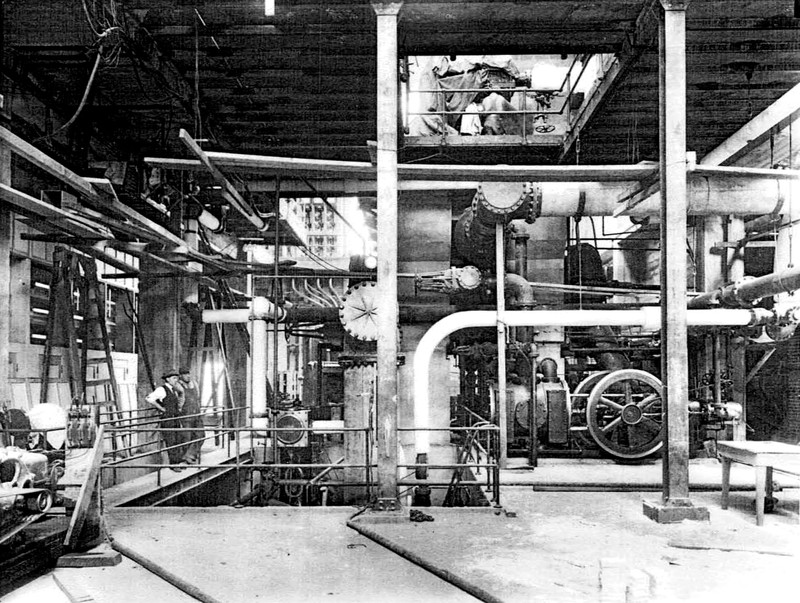PG&E Powerhouse Building (1912-1957); Museum of Science and Curiosity
Introduction
Text-to-speech Audio
Constructed in 1912, the Pacific Gas & Electric (PG&E) Powerhouse Building was designed in the Classical Revival style by the well-known Bay Area architect Willis Polk. Built a quarter of a mile from Sacramento's downtown business district, the building was similar to many other public utility buildings in the region. PG&E Powerhouse was upgraded in 1924, becoming the largest steam turbine power plant in the region. It produced high-voltage electricity for more than four decades, until the mid-1950s. The powerhouse and surrounding land were sold in 2002 to the City of Sacramento, which converted the site into the Powerhouse Science Center, later renamed the Museum of Science and Curiosity. The museum offers over a hundred exhibits along with programs and shows.
Images
Pacific Gas & Electric (PG&E) Powerhouse Building, constructed in 1912

Pacific Gas & Electric (PG&E) Powerhouse Building (interior)

Backstory and Context
Text-to-speech Audio
Also known as the Sacramento River Station B, the Pacific Gas & Electric (PG&E) Powerhouse was constructed facing west between Interstate 5 and the Sacramento River, a quarter mile south of Sacramento’s central business district. The architect Willis Polk was commissioned to design the powerhouse building in the Classical Revival style in 1912. In the early 20th century, many public utilities company buildings were designed in the Classical Revival style, in keeping with the principles of the City Beautiful Movement, to which Polk was an adherent. Also a proponent of the Beaux Arts Movement in architecture, Polk incorporated some ornate details into the classical design for the building.
Built with reinforced concreted on a steel frame, the powerhouse was surfaced with cement plaster on three sides and decorated with horizontal lines that were intended to resemble coarse stone. The building’s main archway, which faces to the west, was topped with an ornate cartouche surmounted over a huge classical door, while the southern entrance has a similar look, although not quite as ornate. Each of the building’s main facades are surfaced with a cream tinted Santa Cruz white cement plaster. Originally, the boiler room roof was topped with four large smokestacks, one over each battery of boilers. These smokestacks rose 100 feet into the air when measured from the furnace floor.
The PG&E Powerhouse Building was added to the National Register of Historic Places in 2010. As noted on the nomination form, the building was constructed in “an age typified by corporate trusts.”
In the early 20th century, California’s utilities were largely unregulated, with a patchwork of service providers that competed against one another. Competition from numerous small utility companies with little regulation later gave way to state-regulated monopolies. As described on the nomination form, “giant utilities companies like PG&E gained hegemonic control of entire sectors of the state’s utilities industry… and an unrivaled amount of capital flowed into California’s infrastructure [as] business entrepreneurs and risk takers fueled this gilded age culture.”
Engineers from across the country came to Sacramento to see the PG&E Powerhouse upon its completion, while the Journal of Electricity described Sacramento as “the first American city to demonstrate the practicability of the long-distance transmission of electricity at high voltage.” Using water from the nearby Sacramento River, the steam-powered plant generated power for Sacramento County and other parts of the region until the mid-1950s.
After years of disuse, the building and surrounding land were sold in 2002 to the City of Sacramento to be managed by the Parks and Recreation Department. In the early 2000s, the long-vacant building was renovated and converted into the Powerhouse Science Center, an educational resource affiliated with the Sacramento Municipal Utilities District (SMUD). PG&E Powerhouse Building was added to the National Register of Historic Places in 2010. The site has since been renamed the SMUD Museum of Science and Curiosity, or simply, MOSAC.
Sources
"PG&E Powerhouse: Nomination Form, National Register of Historic Places", National Archives. August 10th, 2010. Accessed September 20th, 2023. https://catalog.archives.gov/id/123860644.
"PG&E Powerhouse - Sacramento, CA", Waymarking. January 24th, 2014. Accessed September 20th, 2023. https://www.waymarking.com/waymarks/WMK0CH_PGE_Powerhouse_Sacramento_CA.
"SMUD Museum of Science and Curiosity", City of Sacramento. Accessed September 20th, 2023. https://www.cityofsacramento.org/Convention-Cultural-Services/Divisions/Powerhouse-Science-Center.
Urbani, Raquel . "Powerhouse, Full Steam Ahead Once Again", Dreyfuss Blackford. January 19th, 2020. Accessed September 20th, 2023. https://www.dreyfussblackford.com/powerhouse-full-steam-ahead-once-again/.
Dreyfuss + Blackford Architects
Dreyfuss + Blackford Architects
